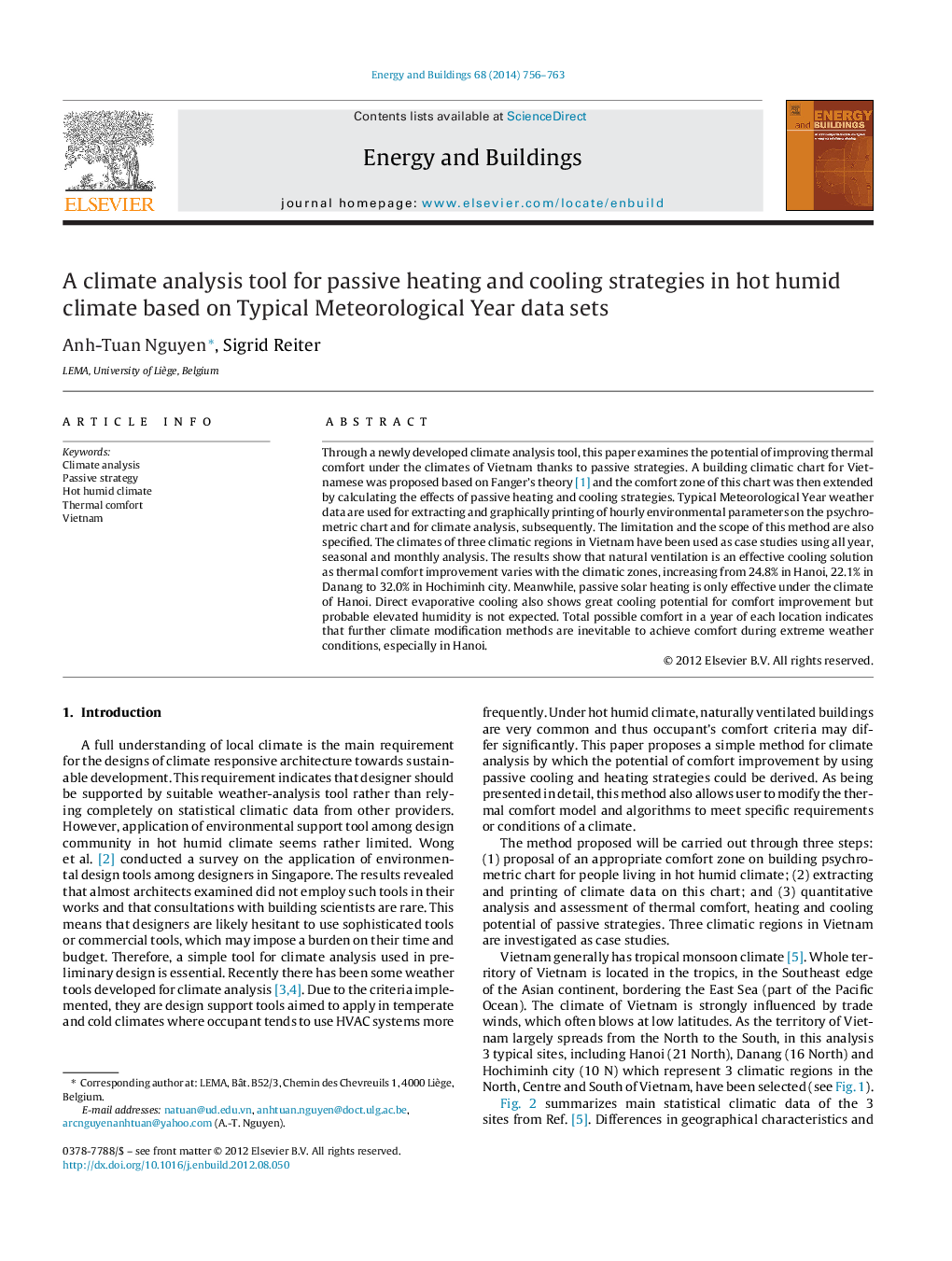| Article ID | Journal | Published Year | Pages | File Type |
|---|---|---|---|---|
| 263116 | Energy and Buildings | 2014 | 8 Pages |
Through a newly developed climate analysis tool, this paper examines the potential of improving thermal comfort under the climates of Vietnam thanks to passive strategies. A building climatic chart for Vietnamese was proposed based on Fanger's theory [1] and the comfort zone of this chart was then extended by calculating the effects of passive heating and cooling strategies. Typical Meteorological Year weather data are used for extracting and graphically printing of hourly environmental parameters on the psychrometric chart and for climate analysis, subsequently. The limitation and the scope of this method are also specified. The climates of three climatic regions in Vietnam have been used as case studies using all year, seasonal and monthly analysis. The results show that natural ventilation is an effective cooling solution as thermal comfort improvement varies with the climatic zones, increasing from 24.8% in Hanoi, 22.1% in Danang to 32.0% in Hochiminh city. Meanwhile, passive solar heating is only effective under the climate of Hanoi. Direct evaporative cooling also shows great cooling potential for comfort improvement but probable elevated humidity is not expected. Total possible comfort in a year of each location indicates that further climate modification methods are inevitable to achieve comfort during extreme weather conditions, especially in Hanoi.
► Comfort zone for people living in hot humid climate. ► Algorithm to quantify heating and cooling effect of passive strategies. ► Algorithm to plot TMY weather data on building psychrometric chart. ► Case study analysis for 3 climatic regions of Vietnam.
